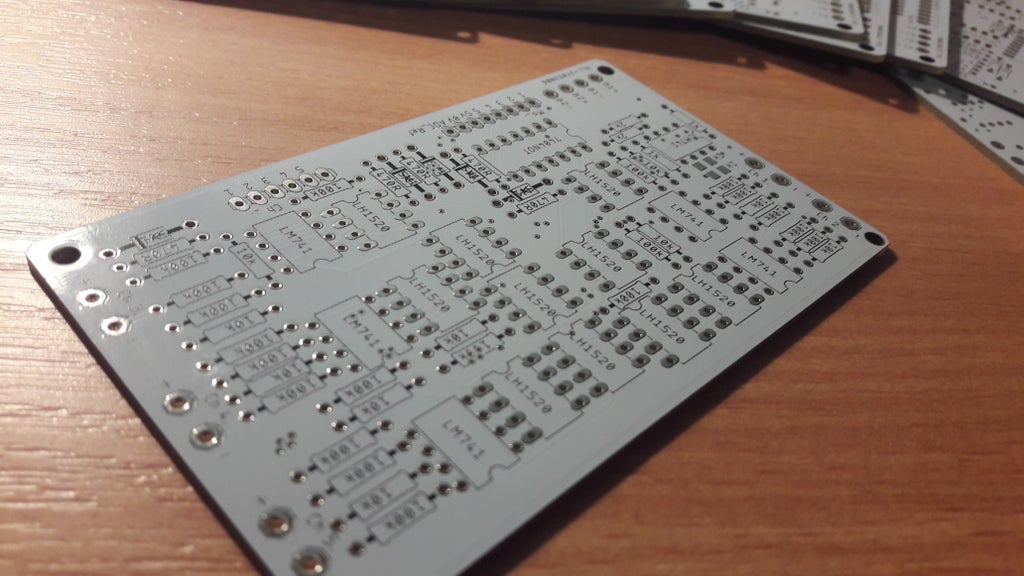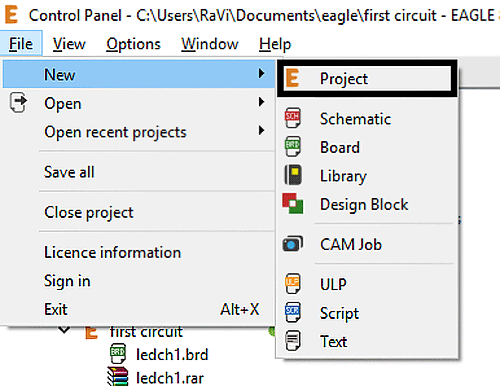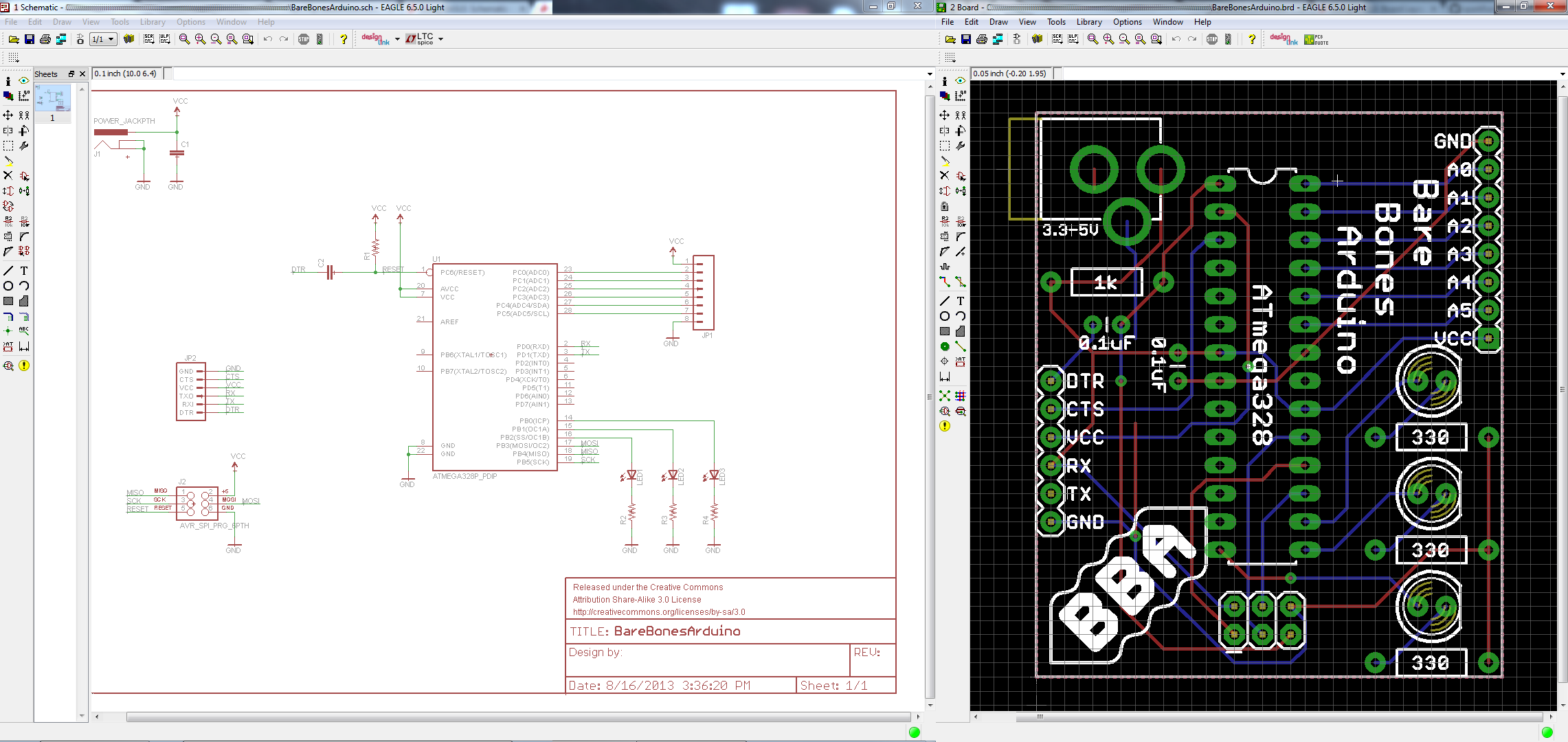- Open Pcb File Ppt
- Pcb File Open
- How To Open Pcb File In Eagle County
- How To Open Pcb File In Eagle Pass
EAGLE is packaged with a handful of nifty example PCB designs. Open one up by expanding the 'Projects' tree. From there, under the 'examples' folder open up the 'arduino' project by double-clicking the red folder (or right-clicking and selecting 'Open project'). PCB design software for everyone Included with a Fusion 360 for personal use subscription, EAGLE free download is a limited version for hobbyists including two schematic sheets, two signal layers and an 80 cm2 (12.4in2) board area. Eagle contains a built-in text editor that can be used for writing/editing SCRIPT and ULP files, but you can use any text editor that allows you to choose the file extension when saving your file. Eagle script files have a.scr file extension, which can create an issue when using Windows and an external text editor.
A quick guide to using and personalizing Eagle configuration script files to tailor settings to your needs.
FavoritedFavorite1Let's talk about Eagle Configuration Scripts: how to use them, and why using your own can make your Eagle experience more enjoyable and efficient.
Let me preface this by saying that there is more I do not know about Autodesk's EAGLE PCB Design Software than there is that I do. That said, this is just a quick explainer, and there will be plenty left unsaid about using Eagle scripts.
If you are new to Eagle or unfamiliar entirely, check out these tutorials to help you get started:
What is a Configuration Script?
Put simply, it's a file used to configure an instance of Eagle with specific settings when opened.
When an instance of an Eagle editor is opened, Eagle accesses a configuration script file (eagle.scr). The configuration script contains a series of commands written in human readable text that change the settings for any instance of an Eagle editor workspace when opened. These include: BOARD Editor, SCHEMATIC Editor, LIBRARY Editor, DEVICE Editor, PACKAGE Editor and SYMBOL Editor. By changing the set of commands within the configuration script, the user can customize the settings of any of the aforementioned Eagle editors without the tedium of having to manually change the settings every time you open up an instance of Eagle.
Perhaps the most valuable feature of a personalized configuration script is the ability to setup a hotkey assignment map and workspace that caters to how you use Eagle. Whether you are designing schematics, designing boards, designing both or just reviewing designs, you can tailor the configuration of Eagle to allow you to work more efficiently.
Eagle is distributed with a default configuration script; it sets some default layers to be used, sets the unit(s) of measure, sets the grid spacing and calls some .ulp files, plus a few more things. Check it out below:
This default Eagle configuration script by no means makes Eagle unusable, but you are stuck with some pretty basic configuration settings. We have a SparkFun Eagle Settings GitHub repository, which includes an Eagle configuration script that provides a good starting point for understanding how these scripts are used, and for personalizing your own.
If you are new to GitHub, below are a couple tutorials explaining what it is, and how it is used:
Below is a simple demo configuration script to use as an example. Let's quickly break down some of the script so that you can get started making or modifying your own!
Open Pcb File Ppt
Anatomy of a Configuration Script
Pcb File Open
The configuration script is broken into a section for each variation of an Eagle editor, and each type is denoted by an editor-specific label. These labels instruct Eagle to run only the portion of the script that is between the editor type label being opened and the next editor label. This means the user can customize unique configuration settings for each editor type, most importantly hotkeys.
| Editor Type | Editor Label |
| Schematic | SCH: |
| Board | BRD: |
| Library | LBR: |
| Device | DEV: |
| Symbol | SYM: |
| Package | PAC: |
The portion of the script that lies above all labels is considered global. These instructions will run for any editor type opened, and will run before the instructions under the editor-specific label are run. Instructions under an editor label will supersede any global instructions that were run prior to the editor label.
To add a comment to your script, insert a pound symbol (#) followed by the text for your comment. Each new line of comments will require a new preceding pound symbol. A comment can live on the same line as a command, assuming it is stated after the command.
Eagle Commands
Eagle utilizes a built-in set of text commands that tell it to do anything from setting a layer's color to setting default wire widths. These commands can be used in place of any of the toolbar buttons, and the command structure and syntax is standardized within Eagle. Conviniently, the commands that can be entered into the command line field of an editor workspace are identical to those that are used to populate an Eagle configuration script.
- As a side note - To utilize a command in a workspace, simply enter the command into the Eagle command line field with proper syntax and press enter. It should be said that some commands are specific to a certain type of editor, for example, a command specific to the schematic editor may return an error if entered into the command line of a board editor. This is also true of commands in a configuration script.
Lets look at a basic Eagle command used under the BRD: label in the above demo configuration script, and discuss the syntax and function. Checkout the command:
Grid inch 0.05 on;
This command tells Eagle to configure three settings:
- inch - sets the unit of measure to be used for the grid to inches
- 0.05 - sets the grid spacing to 0.05 units
- on - sets the grid to be visible to the user
The command is 'Grid,' and the parameters are: 'inch,' '0.05' and 'on.' The semi-colon ';' tells Eagle that there are no more parameters. Remember, this command lives under the BRD: label, which dictates that this command will only be used when opening an instance of the board editor.
You can easily chain together parameters for one command by listing them separated by a space, and terminating the command by adding the semi-colon at the end. Here's another example:
DISPLAY 1 16 17 18 19;
This tells Eagle to make layers 1, 16, 17, 18 and 19 visible to the user. It's pretty intuitive. Interestingly, one could design an entire schematic with a string of text using Eagle's built-in commands.
Writing and Editing a Configuration Script
Eagle contains a built-in text editor that can be used for writing/editing SCRIPT and ULP files, but you can use any text editor that allows you to choose the file extension when saving your file. Eagle script files have a .scr file extension, which can create an issue when using Windows and an external text editor. Windows views a .scr file as a screensaver file, which means users may have trouble opening this file with a text editor. To fix this, go into the default apps setting menu (WINDOWS 10) or Program settings (WINDOWS 7) and set the default app for .scr files to whichever text editor you prefer.

Another point to take note of is that the configuration script file must be named 'eagle.scr', and must live in the directory that is specified in the Directories: Scripts field.
Setting the Directory for your Configuration Script
To change/set any of the directory paths that Eagle uses to look for files, open up an instance of the Eagle Control panel, click on Options in the menu bar and click once more on Directories... in the drop-down. This will open the directories window, which houses the fields to set the file paths to the directories that contain files that you and Eagle want to use together. The Scripts field is where you set your configuration script file path.
For a detailed list of built-in Eagle commands, command descriptions and command usage examples, check out the Editor Commands section of the Eagle help utility, and for more information about Eagle scripts, check out the SCRIPT sub-section of the the Editor Commands section.
Eagle has a great built in HELP utility; it's an invaluable resource for novice and expert users alike. The HELP utility can be found on the far right of the menu bar on any main Eagle workspace window or the Eagle Control Panel.
Now go create your own Configuration Script!!!
...and be sure to let us know about your experiences using Eagle configuration scripts, plus any of your own tricks and tips, in the comments below.
Autodesk EAGLE ships with a ton of free libraries right out of the box, but for some, that might be a bit of a problem. Ever heard of the illusion of choice? When you are given too many options, you don’t end up choosing any! What if you have a particular project that you want to work on from Sparkfun or Adafruit and just need to use their specific parts?
Thankfully there’s a solution. This is where the Sparkfun and Adafruit parts libraries come in handy, providing you with all the parts you need for a project without any of the clutter. Let’s learn how to use these libraries in Autodesk EAGLE!
Step 1 – Download Your Libraries
To get started, you’ll need to download the Sparkfun and/or Adafruit libraries from their respective Github pages. Here’s how:
- Open the Sparkfun Library Github and Adafruit Library Github pages.
- Select the green Clone or download button and choose Download ZIP.
- Once your zip files are downloaded, go ahead and extract them to your selected folder.
Use the green Clone or download button to easily download your Sparkfun and Adafruit libraries from Github.
Where you choose to store your Sparkfun and Adafruit library folders is entirely up to you. To keep everything in one place, we decided to make a new folder in our documents directory called eagle_external_lbrs and then we added two Sparkfun and Adafruit library folders.
Step 2 – Update Your EAGLE Library Directory

Now that your new Sparkfun and Adafruit libraries have a new home on your computer’s hard drive, it’s time to update your EAGLE directory so they can be found. Follow these steps to make it happen:
- Open Autodesk EAGLE, and you’ll be greeted with the Control Panel.
- Next, select Options » Directoriesto open the Directoriesdialog.
- You’ll now need to add the file path that your Sparkfun and Adafruit libraries are stored in the Libraries field. Check out the note below on how this works.
Before You Start Deleting Files, Read This! Instead of removing the $EAGLEDIR/lbr: path, you’ll add your new file path after the default directory, using either a semicolon (;) on Windows or a colon (:) on Mac. Your new Libraries file path will look something like this:
$EAGLEDIR/lbr:/Users/<name>/Documents/eagle_external_lbrs
/Users/<name>/Documents/eagle_external_lbrs is where we happened to store our new libraries, but your path name will likely be different.
Need an easy way to get your path name? Check out this guide for Mac and this guide for Windows.
- Select OK to finalize your directory changes.
- Close and reopen Autodesk EAGLE.
When you reopen Autodesk EAGLE, check out the Libraries folder in your Control Panel and you should see your newly added folder(s).
Here’s how your Libraries directory will look after adding your new Sparkfun and Adafruit libraries.
Step 3 – Activate Your New Libraries

Before you can start using your Sparkfun and Adafruit libraries, you’ll need to activate them in Autodesk EAGLE. Here’s how to do it:
- Select the Arrow icon to expand your Libraries folder in the Control Panel until you see your new Sparkfun and Adafruit folders.
- Next, right-click your Sparkfun and/or Adafruit libraries folder and select Use all.
Use all action to make your Sparkfun and Adafruit libraries ready for use.
You’ll know that you successfully activated one of your new libraries by looking inside each folder. If you see a green dot next to each part, then this means they’re ready for action!
Not sure if your libraries are active? Just look for the green dot!
One thing to keep in mind – If you only want to use your new Sparkfun or Adafruit libraries but not your default EAGLE libraries then you’ll need to deactivate these. To do this
- Select the Arrow icon to expand your Libraries folder in the Control Panel until you see your default lbr folder.
- Next, right-click your lbr folder and select Use None.
You’ll know this worked by looking inside the lbr folder. If you see a gray dot next to each part library, then you have successfully deactivated them!
Got a gray dot next to a library? That means it’s deactivated and won’t show up in your searches.
Three Simple Steps

How To Open Pcb File In Eagle County
That’s all there is to it, three simple steps to get up and running with your new Sparkfun and Adafruit libraries! If you select the Add icon in an open Autodesk EAGLE project, then you should be greeted with all of your fancy new libraries, ready for use. Working with only the libraries that you need for a particular project will help you to be way more efficient in your design process. No more scouring through endless folders just to find the right electrolytic capacitor!
How To Open Pcb File In Eagle Pass
Ready to get started with using your very own Sparkfun and Adafruit libraries in your next PCB design software project? Try Autodesk EAGLE for free today!